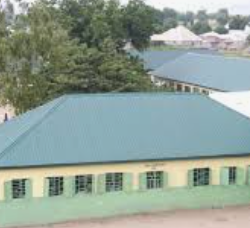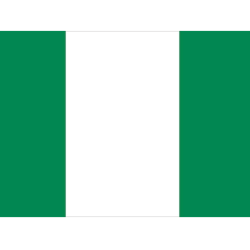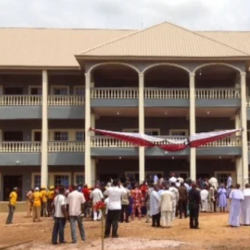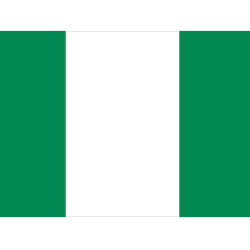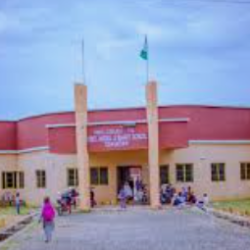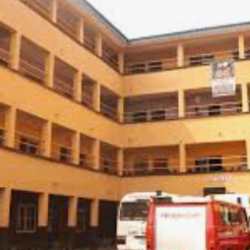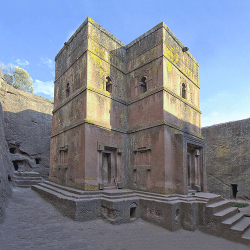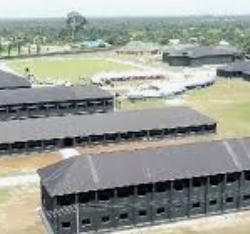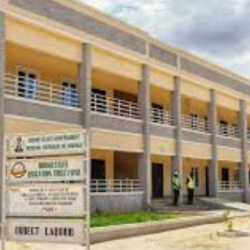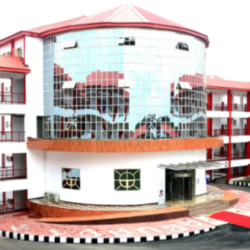Angola is administratively divided into 18 provinces, each with its own capital city. These provinces represent the country’s diverse geography, culture, and resources.
List of Angola’s provinces and their capitals
| # | Province | Capital City |
|---|---|---|
| 1 | Bengo | Caxito |
| 2 | Benguela | Benguela |
| 3 | Bié | Kuito |
| 4 | Cabinda | Cabinda |
| 5 | Cuando Cubango | Menongue |
| 6 | Cuanza Norte | N’dalatando |
| 7 | Cuanza Sul | Sumbe |
| 8 | Cunene | Ondjiva |
| 9 | Huambo | Huambo |
| 10 | Huíla | Lubango |
| 11 | Luanda | Luanda |
| 12 | Lunda Norte | Lucapa |
| 13 | Lunda Sul | Saurimo |
| 14 | Malanje | Malanje |
| 15 | Moxico | Luena |
| 16 | Namibe | Namibe |
| 17 | Uíge | Uíge |
| 18 | Zaire | M’banza-Kongo |
Basic Facts
- Total Provinces: 18
- Largest Province: Moxico
- Smallest Province: Bengo
- Most Populated: Luanda
- Unique Province: Cabinda (exclave, separated by DRC territory)
Northern Provinces
These provinces are close to the Democratic Republic of Congo and are rich in culture, history, and natural resources.
- Bengo (Caxito) – Known for agriculture and proximity to Luanda.
- Uíge (Uíge) – Famous for coffee production.
- Zaire (M’banza-Kongo) – Historical home of the ancient Kongo Kingdom.
- Cabinda (Cabinda) – Exclave province, rich in oil resources.
Central Provinces
Located inland, these are important for farming and mining.
- Benguela (Benguela) – Major port city and fishing hub.
- Bié (Kuito) – Agricultural heartland, known for maize and livestock.
- Cuanza Norte (N’dalatando) – Important for fruit cultivation.
- Cuanza Sul (Sumbe) – Mix of farming and coastal activities.
- Malanje (Malanje) – Famous for Kalandula Falls, one of Africa’s largest waterfalls.
Eastern Provinces
Vast and sparsely populated, these provinces hold mineral wealth and forests.
- Moxico (Luena) – Largest province by area, rich in timber and minerals.
- Lunda Norte (Lucapa) – Known for diamond mining.
- Lunda Sul (Saurimo) – Another major diamond-producing region.
Southern Provinces
Bordering Namibia, these provinces have unique climates and traditions.
- Cuando Cubango (Menongue) – Known for wildlife and part of the Okavango basin.
- Cunene (Ondjiva) – Semi-arid region, influenced by Namibian culture.
- Huíla (Lubango) – Important agricultural hub, famous for Christ the King statue and mountain scenery.
- Namibe (Namibe) – Desert landscapes and home to the Welwitschia plant.
Capital Region
- Luanda (Luanda) – The national capital, largest city, and economic powerhouse of Angola.
Travel and Cultural Guide to Angola’s 18 Provinces
Angola is one of Africa’s most fascinating countries, with a mix of Atlantic coastline, highlands, desert, rainforests, and diamond-rich territories. Below is a province-by-province guide highlighting tourist attractions, cultural traditions, and local economies.
1. Bengo (Capital: Caxito)
- Travel: Close to Luanda, Bengo offers scenic rivers like the Dande and beautiful lagoons. The Panguila Lagoon is popular for birdwatching.
- Culture: A mix of urban and rural traditions influenced by its proximity to the capital.
- Economy: Agriculture dominates, with crops like bananas, coffee, and cassava.
2. Benguela (Capital: Benguela)
- Travel: Known for stunning beaches such as Baía Azul and Baía Farta, and the Benguela Railway, which historically linked Angola to Zambia and the DRC.
- Culture: Rich Portuguese colonial heritage, visible in architecture and festivals.
- Economy: Fishing, salt production, and a growing tourism sector.
3. Bié (Capital: Kuito)
- Travel: Scenic highlands and opportunities for eco-tourism.
- Culture: Known for traditional dances and crafts from local ethnic groups.
- Economy: Agriculture is key, especially maize and livestock farming.
4. Cabinda (Capital: Cabinda)
- Travel: Separated from mainland Angola, Cabinda has tropical forests, beautiful beaches, and vibrant markets.
- Culture: Strong cultural identity, influenced by its history as an exclave.
- Economy: Rich in oil reserves, making it one of Angola’s wealthiest provinces.
5. Cuando Cubango (Capital: Menongue)
- Travel: Part of the Okavango River Basin, with opportunities for safari tourism, fishing, and birdwatching.
- Culture: Local communities maintain traditional lifestyles, with influences from neighboring Namibia and Botswana.
- Economy: Potential in eco-tourism, forestry, and farming.
6. Cuanza Norte (Capital: N’dalatando)
- Travel: Known for waterfalls, mountains, and tropical fruit plantations.
- Culture: Strong agricultural traditions with rural festivals.
- Economy: Citrus fruit cultivation, maize, and coffee farming.
7. Cuanza Sul (Capital: Sumbe)
- Travel: Features coastal cliffs, beaches, and waterfalls like the Kalandula (shared with Malanje).
- Culture: Traditional music and rural crafts thrive here.
- Economy: Coffee, sugarcane, and fishing.
8. Cunene (Capital: Ondjiva)
- Travel: Semi-arid landscapes with cattle herding traditions. The Epupa Falls near the border with Namibia are a major attraction.
- Culture: Home to the Himba and Ovambo peoples with unique dress and customs.
- Economy: Livestock farming is central to daily life.
9. Huambo (Capital: Huambo)
- Travel: Known as Angola’s “Garden Province” for its fertile land and pleasant climate. Offers colonial architecture and scenic plateaus.
- Culture: Music and dance play a big role in local traditions.
- Economy: Agriculture and transport hub (Benguela Railway).
10. Huíla (Capital: Lubango)
- Travel: Famous for the Christ the King statue (Cristo Rei), Tundavala Gap cliffs, and scenic mountain landscapes.
- Culture: Diverse cultural influences due to migration and trade.
- Economy: Agriculture, coffee, and cattle farming.
11. Luanda (Capital: Luanda)
- Travel: Angola’s capital city with beaches, nightlife, and historical sites like Fortaleza de São Miguel.
- Culture: A blend of modern urban life and traditional Angolan heritage.
- Economy: The country’s economic powerhouse, driven by oil, trade, and services.
12. Lunda Norte (Capital: Lucapa)
- Travel: Remote and less developed, but rich in natural beauty.
- Culture: Traditional diamond-mining communities with unique folklore.
- Economy: Major diamond production hub.
13. Lunda Sul (Capital: Saurimo)
- Travel: Home to lush forests and rivers, offering eco-tourism potential.
- Culture: Strong cultural traditions, including storytelling and music.
- Economy: Also heavily reliant on diamonds.
14. Malanje (Capital: Malanje)
- Travel: Famous for the breathtaking Kalandula Falls and Cangandala National Park, home to the giant sable antelope.
- Culture: Folk dances and agricultural festivals are common.
- Economy: Agriculture and eco-tourism.
15. Moxico (Capital: Luena)
- Travel: Angola’s largest province with rivers, forests, and remote wilderness perfect for adventure tourism.
- Culture: Home to diverse ethnic groups with strong oral traditions.
- Economy: Timber, mining, and agriculture.
16. Namibe (Capital: Namibe)
- Travel: Known for the Namib Desert landscapes, Welwitschia plant, and cliffs overlooking the Atlantic.
- Culture: Rich mix of coastal traditions and desert lifestyles.
- Economy: Fishing and tourism are growing sectors.
17. Uíge (Capital: Uíge)
- Travel: Beautiful forests and coffee plantations, plus cultural festivals.
- Culture: Strong traditions in music and storytelling.
- Economy: Coffee production is central, along with agriculture.
18. Zaire (Capital: M’banza-Kongo)
- Travel: Historically significant as the center of the Kongo Kingdom, now a UNESCO World Heritage Site.
- Culture: Deeply rooted in ancient Kongo traditions.
- Economy: Oil production and agriculture.

Angola’s 18 provinces together form a vibrant mosaic of cultures, landscapes, and economic activities. From the oil fields of Cabinda to the diamonds of the Lundas, the deserts of Namibe, and the urban heartbeat of Luanda, Angola offers travelers and researchers a unique opportunity to explore Africa’s hidden gems.
